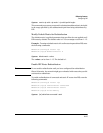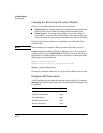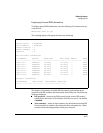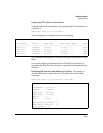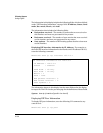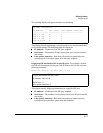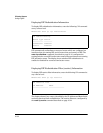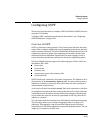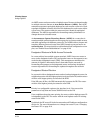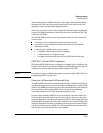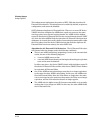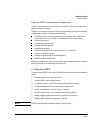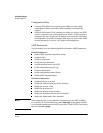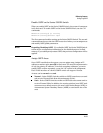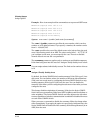
IP Routing Features
Configuring OSPF
Configuring OSPF
This section describes how to configure OSPF on HP Series 5300XL Switches
using the CLI interface.
To display OSPF configuration information and statistics, see “Displaying
OSPF Information” on page 16-52.
Overview of OSPF
OSPF is a link-state routing protocol. The protocol uses link-state advertise-
ments (LSA) to update neighboring routers regarding its interfaces and infor-
mation on those interfaces. The Series 5300XL Switch floods these LSAs to all
neighboring routers to update them regarding the interfaces. Each router
maintains an identical database that describes its area topology to help a
router determine the shortest path between it and any neighboring router.
HP Series 5300XL Switches support the following types of LSAs, which are
described in RFC 2328:
Router link
Network link
Summary link
Autonomous system (AS) summary link
AS external link
OSPF is built upon a hierarchy of network components. The highest level of
the hierarchy is the Autonomous System (AS). An autonomous system is
defined as a number of networks, all of which share the same routing and
administration characteristics.
An AS can be divided into multiple areas. Each area represents a collection
of contiguous networks and hosts. Areas define the limit to which link-state
advertisements are broadcast, thereby limiting the amount of flooding that
occurs within the network. An area is represented in OSPF by either an IP
address or a number.
You can further limit the broadcast area of flooding by defining an area range.
The area range allows you to assign an aggregate value to a range of IP
addresses. This aggregate value becomes the address that is advertised
instead all of the individual addresses it represents being advertised. You can
assign up to 8 ranges in an OSPF area.
16-33



